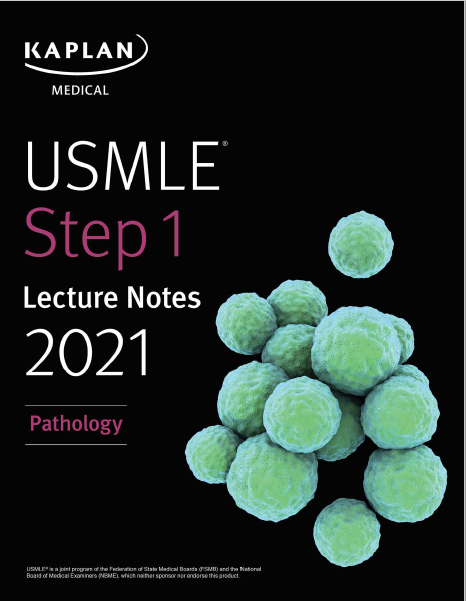About Book
The find out about of the necessary nature of disease, inclusive of symptoms/signs, pathogenesis, complications, and morphologic penalties such as structural and purposeful variations in cells, tissues, and organs.
The learn about of all factors of the disorder technique focusing on the pathogenesis main to classical structural modifications (gross and histopathology) and molecular transformations The etiology (cause) of a ailment may additionally be genetic or environmental.
The pathogenesis of a ailment defines the temporal sequence and the patterns of cell damage that lead to disease. Morphologic modifications of the sickness manner encompass each gross adjustments and microscopic changes. The medical value of a disorder relates to its symptoms and symptoms, sickness direction along with complications, and prognosis.
An organism should be in a position to save and retain its genetic information, skip that facts alongside to future generations, and categorical that facts as it contains out all the strategies of life. The primary steps worried in managing genetic data are illustrated by means of the central dogma of molecular biology.
Genetic facts is saved in the base sequence of DNA molecules.
Ultimately, at some stage in the method of gene expression, this records is used to synthesize all the proteins made via an organism. Classically, a gene is a unit of the DNA that encodes a precise protein or RNA molecule. Although this definition is now tricky by means of our extended understanding of the approaches in which genes may additionally be expressed, it is nonetheless beneficial as a working definition.
Gene Expression and DNA Replication Gene expression and DNA replication are in contrast below. Transcription, the first stage in gene expression, includes switch of records located in a double-stranded DNA molecule to the base sequence of a single-stranded RNA molecule.
If the RNA molecule is a messenger RNA, then the manner recognised as translation converts the statistics in the RNA base sequence to the amino acid sequence of a protein.
When cells divide, every daughter mobile have to get hold of an correct replica of the genetic information. DNA replication is the technique in which every chromosome is duplicated earlier than cellphone division.
The thinking of the mobile cycle can be used to describe the timing of some of these activities in a eukaryotic cell. The M section (mitosis) is the time in which the cellphone divides to shape two daughter cells. Interphase describes the time between two mobile divisions or mitoses.
Gene expression takes place all through all degrees of interphase. Interphase is subdivided as follows: • G1 segment (gap 1) is a length of cell increase previous DNA synthesis. Cells that have stopped cycling, such as muscle and nerve cells, are stated to be in a one-of-a-kind kingdom known as G0. • S section (DNA synthesis) is the duration of time all through which DNA replication occurs.
At the quit of S phase, every chromosome has doubled its DNA content material and is composed of two equal sister chromatids linked at the centromere. • G2 section (gap 2) is a length of cell increase after DNA synthesis however previous mitosis. Replicated DNA is checked for any blunders earlier than mobile phone division.
Control of the mobile cycle is completed at checkpoints between the quite a number phases by using strategic proteins such as cyclins and cyclin-dependent kinases. These checkpoints make certain that cells will no longer enter the subsequent section of the cycle till the molecular activities in the preceding mobile phone cycle segment are concluded.
Reverse transcription, which produces DNA copies of an RNA, is greater many times related with existence cycles of retroviruses, which replicate and specific their genome thru a DNA intermediate (an built-in provirus). Reverse transcription additionally happens to a restrained extent in human cells, the place it performs a position in amplifying sure relatively repetitive sequences in the DNA.
NUCLEOTIDE STRUCTURE AND NOMENCLATURE Nucleic acids (DNA and RNA) are assembled from nucleotides, which consist of three components: a nitrogenous base, a 5-carbon sugar (pentose), and phosphate.
Five-Carbon Sugars Nucleic acids (as properly as nucleosides and nucleotides) are categorized in accordance to the pentose they contain. If the pentose is ribose, the nucleic acid is RNA (ribonucleic acid); if the pentose is deoxyribose, the nucleic acid is DNA (deoxyribonucleic acid). Bases There are two kinds of nitrogen-containing bases often located in nucleotides: purines and pyrimidines.
• Purines comprise two rings in their structure. The purines typically discovered in nucleic acids are adenine (A) and guanine (G); each are discovered in DNA and RNA. Other purine metabolites, no longer typically discovered in nucleic acids, consist of xanthine, hypoxanthine, and uric acid. • Pyrimidines have solely 1 ring. Cytosine (C) is current in each DNA and RNA. Thymine (T) is generally observed solely in DNA, whereas uracil (U) is located solely in RNA.
Nucleosides and Nucleotides Nucleosides are shaped through covalently linking a base to the range 1 carbon of a sugar. The numbers figuring out the carbons of the sugar are labeled with “primes” in nucleosides and nucleotides to distinguish them from the carbons of the purine or pyrimidine base.
Nucleotides are shaped when 1 or greater phosphate organizations is connected to the 5′ carbon of a nucleoside. Nucleoside di- and triphosphates are high-energy compounds due to the fact of the hydrolytic strength related with the acid anhydride bonds.


